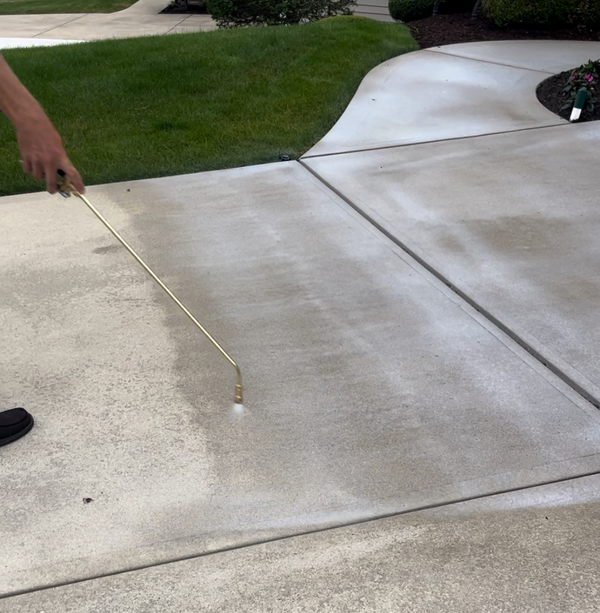Concrete surfaces, whether driveways, sidewalks, or patios, are exposed to the elements year-round. However, winter poses a unique set of challenges that can significantly impact the longevity and appearance of your concrete. This article will explore why it's crucial to clean and seal your concrete before the winter season sets in.
How Winter Weather Affects Concrete
Winter weather can be harsh on concrete surfaces. The freeze-thaw cycle, where water seeps into the concrete, freezes, and then expands, can cause cracks and surface damage. Additionally, the use of de-icing salts can lead to further deterioration by increasing the freeze-thaw damage and causing chemical reactions that weaken the concrete.
The Benefits of Cleaning Concrete Before Winter
Cleaning your concrete before winter helps remove dirt, debris, and stains that can become more difficult to clean once temperatures drop. A clean surface ensures that the sealant adheres properly, providing better protection against winter weather. Furthermore, removing organic materials like leaves and moss can prevent slip hazards when wet or icy conditions arise.
The Importance of Sealing Concrete
Sealing concrete is an essential step in protecting it from winter damage. A high-quality sealant acts as a barrier against water infiltration, reducing the risk of cracks and surface damage from the freeze-thaw cycle. It also helps protect against stains from de-icing salts and other chemicals used during the winter months. Sealing your concrete can extend its lifespan and maintain its appearance.
Step-by-Step Guide to Cleaning and Sealing Concrete
1. Prepare the Area: Remove any furniture, plants, or obstacles from the concrete surface.
2. Clean the Surface: Use a pressure washer or a stiff-bristled brush with a suitable cleaner to remove dirt, stains, and debris.
3. Rinse Thoroughly: Ensure all cleaning agents are completely rinsed off to avoid any residue.
4. Allow to Dry: Let the concrete dry completely before applying any sealant.
5. Apply Sealant: Choose a high-quality sealant suitable for your concrete type and apply it evenly using a roller or sprayer.
6. Drying Time: Allow the sealant to dry according to the manufacturer's instructions before using the area.
Taking the time to clean and seal your concrete before winter can save you from costly repairs and extend the life of your surfaces. Proper maintenance not only enhances the appearance of your property but also ensures safety during the colder months. By following these steps, you can protect your concrete from the harsh winter elements and keep it looking its best year-round.

This content has been submitted by authors outside of this publisher and is not its editorial product. It could contain opinions, facts, and points of view that have not been reviewed or accepted by the publisher. The content may have been created, in whole or in part, using artificial intelligence tools.

